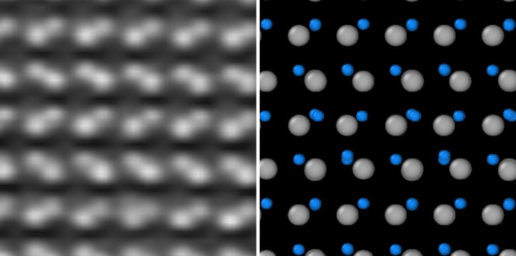| Jun 09, 2023 |
Novel ferroelectrics for more efficient microelectronics
(Nanowerk News) When we communicate with others over wireless networks, information is sent to data centers where it is collected, stored, processed, and distributed. As computational energy usage continues to grow, it is on pace to potentially become the leading source of energy consumption in this century. Memory and logic are physically separated in most modern computers, and therefore the interaction between these two components is very energy intensive in accessing, manipulating, and re-storing data.
|
|
A team of researchers from Carnegie Mellon University and Penn State University is exploring materials that could possibly lead to the integration of the memory directly on top of the transistor. By changing the architecture of the microcircuit, processors could be much more efficient and consume less energy. In addition to creating proximity between these components, the nonvolatile materials studied have the potential to eliminate the need for computer memory systems to be refreshed regularly.
|
|
Their recent work published in Science ("Atomic-scale polarization switching in wurtzite ferroelectrics") explores materials that are ferroelectric, or have a spontaneous electric polarization that can be reversed by the application of an external electric field.
|
|
Recently discovered wurtzite ferroelectrics, which are mainly composed of materials that are already incorporated in semiconductor technology for integrated circuits, allow for the integration of new power-efficient devices for applications such as non-volatile memory, electro-optics, and energy harvesting. One of the biggest challenges of wurtzite ferroelectrics is that the gap between the electric fields required for operation and the breakdown field is very small.
|
 |
| In-situ experimental STEM images (left panel) and first-principles calculation prediction (right panel). (Image: CMU)
|
|
“Significant efforts are devoted to increasing this margin, which demands a thorough understanding of the effect of films’ composition, structure, and architecture on the polarization switching ability at practical electric fields,” said Carnegie Mellon post-doctoral researcher Sebastian Calderon, who is the lead author of the paper.
|
|
The two institutions were brought together to collaborate on this study through the Center for 3D Ferroelectric Microelectronics (3DFeM), which is an Energy Frontier Research Center (EFRC) program led by Penn State University through funding from the U.S. Department of Energy’s (DOE) office of Basic Energy Science (BES).
|
|
Carnegie Mellon’s materials science and engineering department, led by Professor Elizabeth Dickey, was tapped for this project because of its background in studying the role of the structure of materials in the functional properties at very small scales through electron microscopy.
|
|
“Professor Dickey’s group brings a particular topical expertise in measuring the structure of these materials at very small length scales, as well as a focus on the particular electronic materials of interest of this project,” said Jon-Paul Maria, professor of Materials Science and Engineering at Penn State University.
|
|
Together, the research team designed an experiment combining the strong expertise of both institutions on the synthesis, characterization and theoretical modeling of wurtzite ferroelectrics. By observing and quantifying real-time polarization switching using scanning transmission electron microscopy (STEM), the study resulted in a fundamental understanding of how such novel ferroelectric materials switch at the atomic level. As research in this area progresses, the goal is to scale the materials to a size in which they can be used in modern microelectronics.
|

